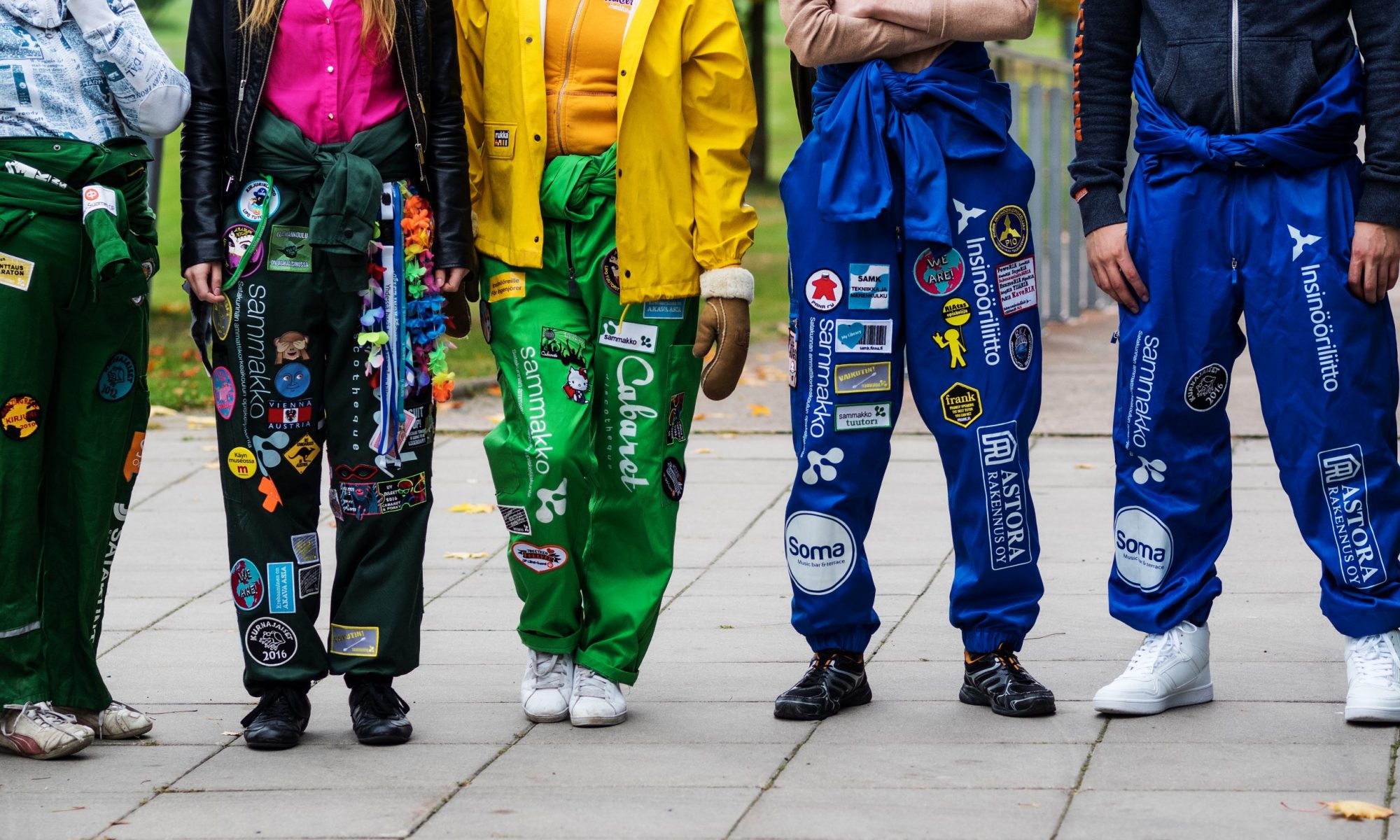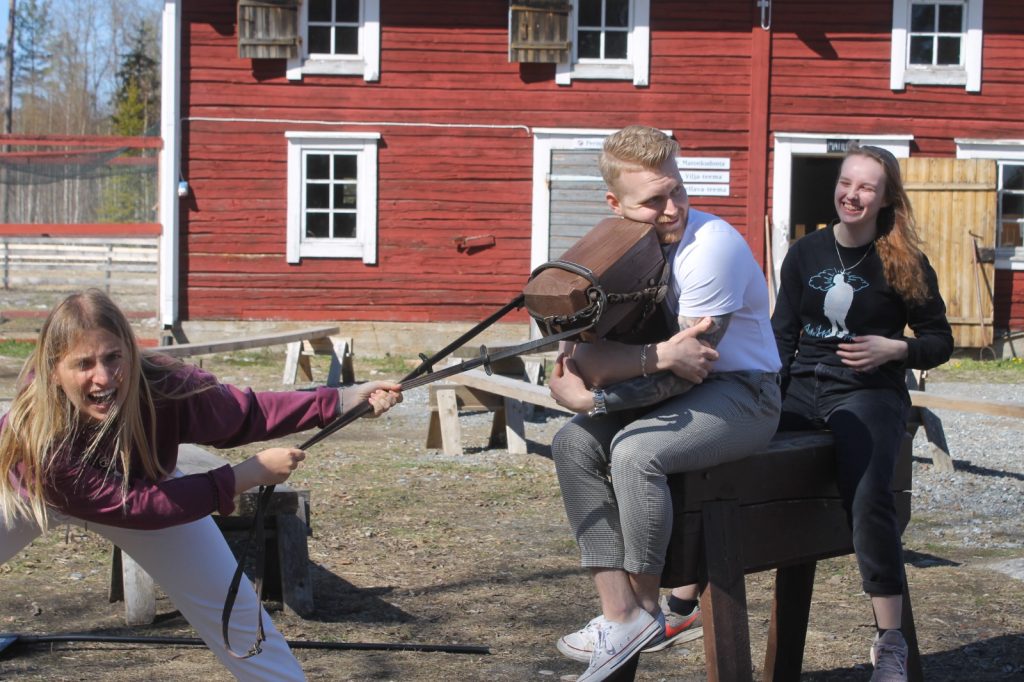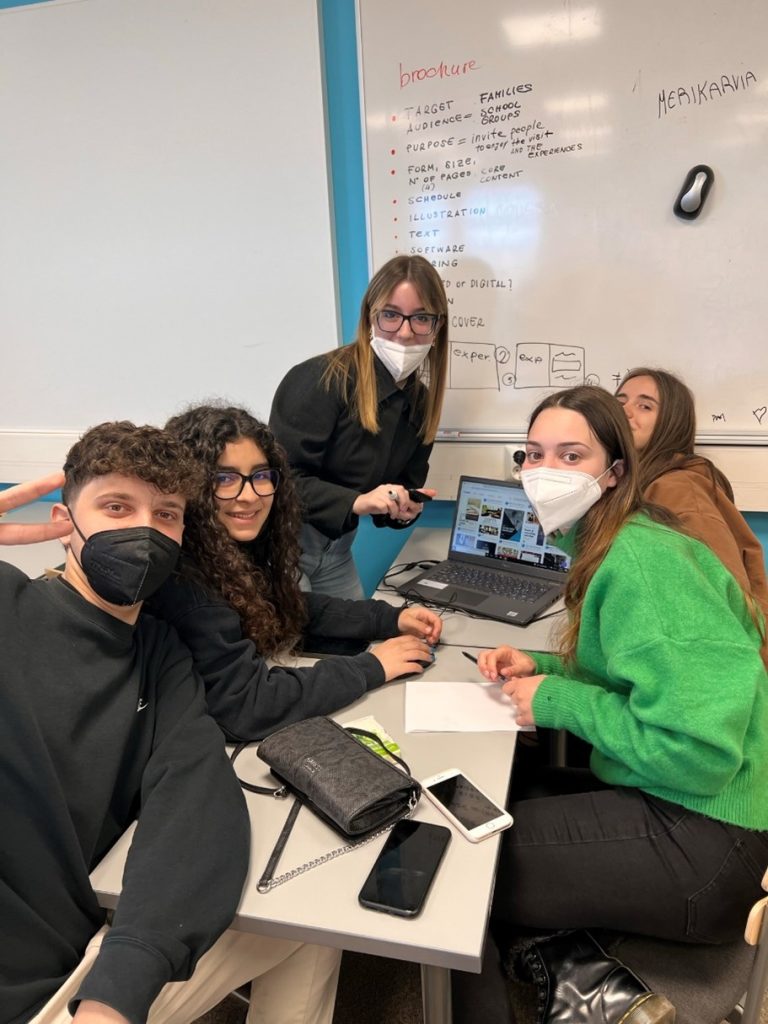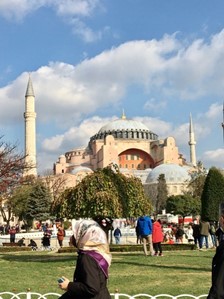This is a collection of day trip test reports from students who have been working for SAMK’s own travel agency, SAMK EduTravel, this Spring.
Product testing: wonderful winter exploration day at Pitkäjärvi (on 20 January 2022)
It was still dark outside when our product testing group gathered at the SAMK parking lot at 7.30 AM. It started snowing when we were driving from Pori to Kokemäki, adding to the sense of a genuine winter adventure. Upon arrival at the Pitkäjärvi Recreational Centre, we were greeted by our host and enjoyed morning coffee with sandwiches near the frozen lakeside.
Full of energy and in high spirits, we then proceeded to the fatbikes, which were available as battery-powered or regular. I went for the muscle-powered option. After receiving instructions on how to use the electric fatbikes, we put our helmets on and proceeded to the road and then to forest. It was already dawning, and the white snow helped us to stay on the trail, although going offroad was not a problem when driving a fatbike on a pristine, thick layer of snow and ice.
Riding a fatbike through the forest was a pleasure, and those who went for electric fatbikes were clearly having a blast, as they could take on occasionally rough terrain with ease. It was snowing pretty much all the time when were out fatbiking, which proved some challenge with my GoPro, as the lens cover needed to be wiped dry pretty often.
The day was not over after our fatbike ride, as there was a tasty salmon soup lunch waiting for us at the lean-to near the lake. To make sure nobody was on the verge of hypothermia, the hot soup was followed by a sauna, with an option of dipping into the icy Pitkäjärvi lake. Having never tried it before, I quite enjoyed the brief swim in the chilly water.
We also had a photo contest where the participants posted their photos on WhatsApp, after which the winning photo was voted by all. Some of our photos and videos were also published on EduTravel’s social media channels.
As this day was also a Project challenge assignment for Iina, we filled her feedback sheets after the sauna and discussed the experience with our host over coffee and pastries. Our experiences were mostly positive, with the activities being enjoyed by everyone. In addition to product testing, the purpose of the trip was to redevelop the product and to gain footage for marketing purposes. The suggestions for improvement included such things as spending a little more time on biking instructions (how to wear the helmet correctly), putting together a diploma for those who tried winter swimming, and how to better utilize the day as a team-building opportunity.
All in all, a fine day with very nice activities in the great outdoors in Kokemäki!
Text: Olli Riihimäki

Product testing trip to Koivuniemen Herra Farm on Saturday 9th of April 2022 / Fun at the Farm (Budget)
The need for this product testing sparked when we didn’t get enough bookings for this day trip that we had planned. We suggested this product testing idea to Koivuniemen Herra Farm, and they gladly answered yes. So then began the process of modifying the original program and agreeing on minor details regarding the product testing. The aim was to make a “budget” version of the original program so that it would attract more customers in the future.
We began our journey to Koivuniemen Herra Farm on 9th of April around 13:00 from SAMK Campus Pori. On the way there we had short briefing about the days purpose, signed permissions for photography, went through the program for the day and openly discussed about these subjects. We arrived in Koivuniemen Herra Farm, Merikarvia, a bit earlier than expected so around 13:45. We were warmly welcomed by the staff and then gave short introductions of ourselves. At this point we also asked them to sign the permission for photography so that we could take photos and videos and use that for marketing purposes. Then Sirkkis (our guide for the day) showed us around the premises, for example we got to see the accommodation premises and other buildings such as the old barn that had been turned into multifunctional area for different kinds of events.
Then the day continued with guided farm program and activities which included taking care of the animals and feeding them, but we also got to milk a goat, pet cute rats and chickens. During the day we also had this outdoor lunch including sandwiches, grilled sausages/corn, and French toast as a dessert. The day took a surprise twist when the program ended up with us virtually milking a cow, can you imagine! Finally, it was time to sit down, fill the questionnaires and have a feedback session with the whole crew. We arrived back to SAMK Campus Pori around 19:00.
The essential purpose of the day was to experience the day from international/exchange-student point of view, gather marketing materials, enhancing our partnership between EduTravel and the Koivuniemen Herra Farm and based on feedback made changes to the program/brochure. Viveca Antila was in charge of this project. She organized this product testing, negotiated about the details with the service provider and afterwards updated the brochure and other related materials based on the feedback that was gathered. Overall, I think everything went smoothly and we are happy with the results we got which are even tighter partnership with Koivuniemen Herra Farm and improved day trip product, but also it was super useful from a learning point of view for all of us!
Text: Mika Haavisto
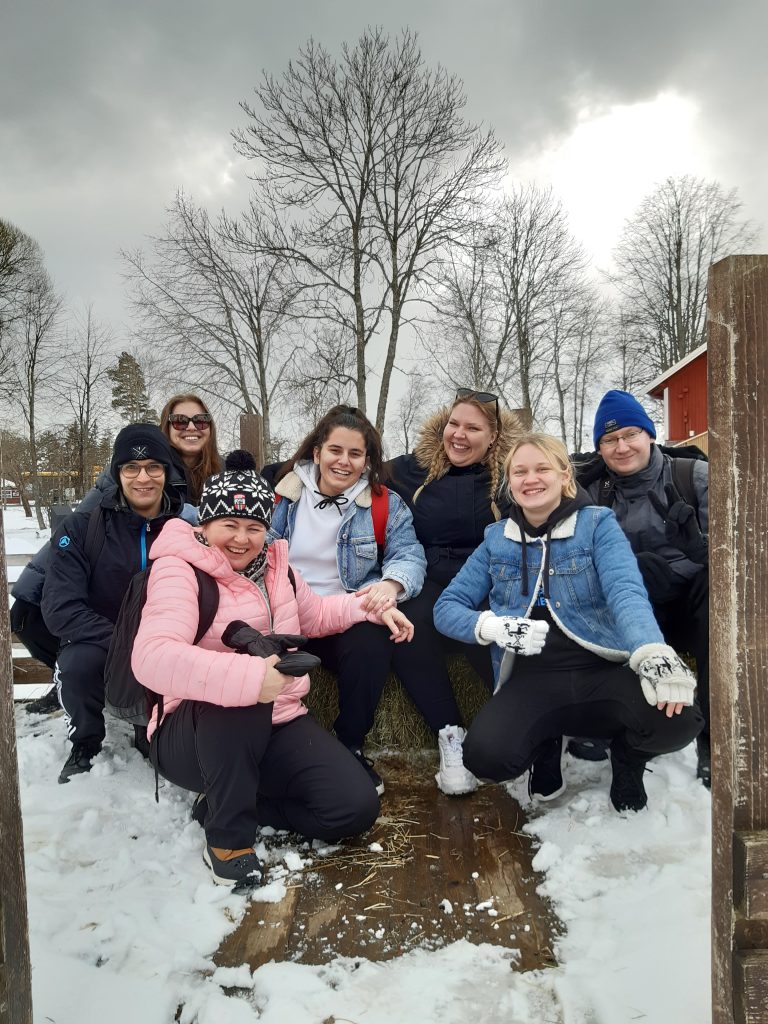
Relaxing Forest & Summer Cottage Feeling – Product testing trip to The Forestry Museum and SyVilla on 22nd of May 2022
On a sunny Sunday morning in May, our entire team of five with our equipment crammed into a small passenger car and headed for Parkano, to Satakunta’s neighboring region of Pirkanmaa. At our first destination, The Forestry Museum of Parkano, we met our guide of the day, nature and recreation service provider Mr. Hannu Raitio, who introduced us the history of the forest industry from the rise of the sawmill industry in the 1860s to mechanization in the 1960s. He was professional and entertaining, and his personal experience and passion brought the stories to life.
The Forestry Museum and lake Kaidatvedet is a part of Lauhanvuori-Hämeenkangas UNESCO Global Geopark. The area of the Forestry Museum includes an exhibition hall, logging hut, sauna, horse stable and forestry machinery. There is also a nature trail, Messukallio cliff, beach, lean-to shelters, and campfire sites in the vicinity of the museum. Our guide introduced us to the premises and led us along the nature trail of “Gustav the Moose” to the magnificent place of devotion, Messukallio, where we had a snack break on a cliff honed by ice age.
Wellness and healing value of nature are growing in popularity as tourism trends. Studies show that nature promotes well-being in many ways, for example, it soothes the body and mind, relieves stress, and increases satisfaction. Spending time in nature improves perceived health status, enhances social cohesion, and supports physical activity. Our guide is a pioneer of the trend, as he is already familiar with the subject and has included relaxing wellness exercises into the day trip experience.
Text: Julia Alankoja

From relaxation and culture to the excitement of summer
We pass from the forest to SyVilla, a cottage located on the shore of a lake. There, we visited different spaces that make up SyVilla hosted by Hannu Raitio. There were two main buildings: in one were the rooms and in another the kitchen-dining room. Then we found different types of “cabins” dedicated to different spaces. For example, one was for the smoke sauna, in another there was a small dining room and in another a normal sauna. But not everything was buildings, it also has outdoor spaces where you can relax and make a campfire.
After visiting all the spaces, we proceeded to have lunch. We decided to do it in a kind of round glass cabin, since we found it very cozy and its views of the lake won us over. Lunch consisted of pasta salad, tomatoes and chicken casserole and to drink kotikalja (a home-made table beer) – what a delicacy!
After digesting, we proceeded to go to the water activities area, sauna and hot-tub. There we had a very fun time between SUP-Boarding falls, swimming and drifting with the canoes and row boating! Of course, the laughs were not lacking. After spending all our energy we spent a long time between the sauna and the hot tub, well… and Olli between beers too (0.0% of course). To finish completely relaxing, after a warm shower we went to another permise and had coffee and pastries.
At this time, we decided to carry out the feedback session, because once the entire product has been tested, it is the right time. We filled out a questionnaire made by SAMK EduTravel and together we gave our point of view and reached different agreements. During the session there is always someone who takes notes of what was said, because sometimes we say things that we have not written because we are inspired at that moment thanks to the opinion of another colleague.
Back to the office
In the office, a summary of what was exposed is made and uploaded to Teams, so that it is registered and everyone has access to it. The same process is for the visual material, which is then sent to the supplier, in this case Hannu Raitio, so that he can use it as well.
Testing a product is good for both parties, because in this way both can improve their services, both for other consumers and for those offered in cooperation between them. Hannu Raitio himself was not very convinced, but after finishing the feedback session he admitted that after that moment he understood what the purpose of this product testing is.
Text: Corina Morales

